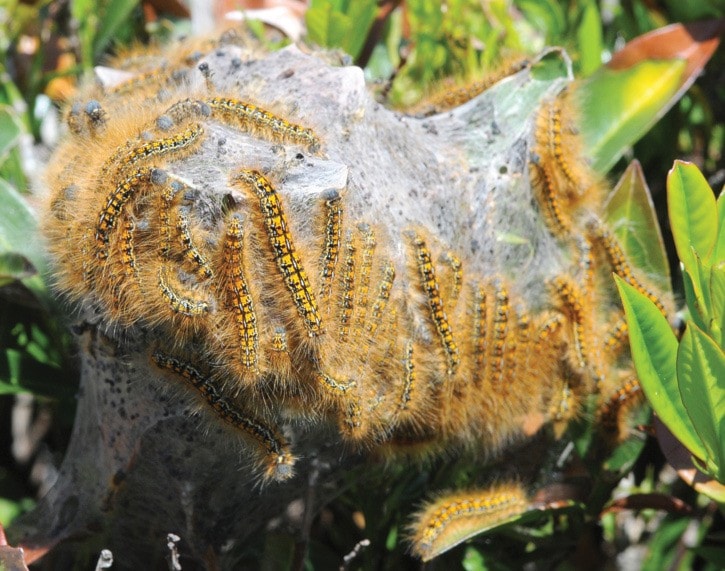They're creepy, they're crawly, they're fuzzy and they're absolutely everywhere.
But fortunately those wriggling masses of silky webbing we’re seeing overhead are nothing more than an annoyance plaguing Greater Victoria.
Teeming with upwards of 100 orange and black caterpillars, these tents, as they’re known, cling to the branches of thousands of leafy trees and shrubs.
"They're mostly just a nuisance pest," said bug expert Jennifer Burleigh about this spring’s outbreak of Western tent caterpillars. "They're unsightly, they congregate en masse, but there's no threat of (tree) mortality to worry about from them."
The caterpillars are defoliants, meaning they'll eat the leaves and move on, without damaging the tree’s trunk and increasing its chance of death.
Why we're seeing a higher than normal numbers of caterpillars isn’t clear, said Burleigh, provincial forest entomologist with the ministry of forests, lands and natural resource operations. However, the caterpillar population boom is likely weather related.
"It's usually a combination of environmental factors that favour their development and are not favouring their predators and parasites," she said, adding that a relatively mild winter is "conducive for their population growth."
Eggs were laid last fall and the hatched caterpillars are now feeding on leaves while living in these tents with their siblings. The tents provide shelter and protection from predators.
Once they have acclimated to the outside temperature – within three to four week – the caterpillars spin their cocoon and emerge as an adult moth just weeks later.
"Once they're adults, they basically have sex, lay their eggs and die," Burleigh said, completing their life cycle.
The entomologist says the insects, which are native to western Canada, as well as the western United States and Mexico, are drawn to most of Greater Victoria's native plants, save for the conifers.
The caterpillars tend to stay close to their birthplace for most of their short-lived life before undergoing transformation into moths.
"We're probably not going to notice the moths to the same extent that you see the caterpillars," Burleigh said. "They're not crawling around the sidewalks or congregating on your patio furniture."
Rae Roer, Saanich's manager of parks, says because the caterpillars aren't much of a threat to trees there aren’t any plans to address the outbreak.
"If people want to get rid of them, trim the branch or destroy the tent and larvae," he said.
Burleigh agrees that's the best way to get rid of them, though she says the worst is likely over.
"They're at the end of their larval stage. Most of the defoliation's likely done," she said. "It's a nuisance, but you won't see them around much longer."
kslavin@saanichnews.com
